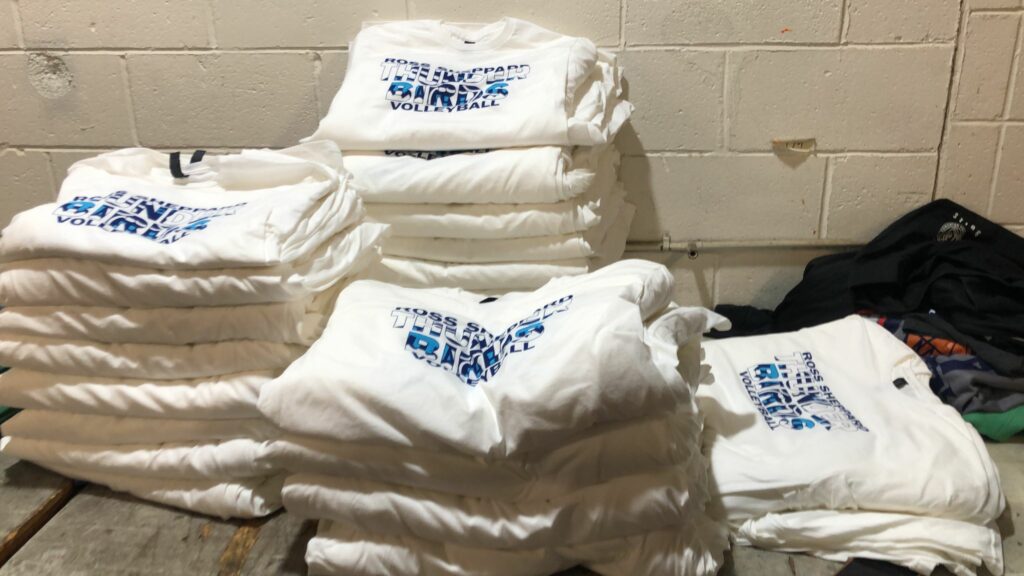High-Quality Screen Printing: Techniques and Best Practices

Introduction
Quality control is a crucial aspect of any manufacturing business, and screen printing is no exception. Achieving high-quality screen printing requires attention to detail, adherence to standards, and a robust quality control program. In this article, we will delve into the process and techniques that enable the production of top-quality screen prints. We will explore various tests, inspections, and best practices that can help you establish a solid quality control program in your shop. By implementing these strategies, you can ensure customer satisfaction, maintain loyalty, and attract high-quality clients.
Establishing a Quality Control Program
To establish an effective quality control program for screen printing, it is essential to identify potential areas where things can go wrong and develop methods to test and document the results. By conducting constant tests and inspections, you can ensure that the garments you deliver meet both customer satisfaction and your company’s standards. Let’s explore the key steps in establishing a quality control program:
1. Garment Inspection
The first step in the quality control process is the inspection of garments. As the garments are removed from their packages, operators should check them for any visible flaws or defects. While it may not be feasible to inspect each garment thoroughly at this stage, it is crucial to catch any flaws before shipping whenever possible. Inspections can also be conducted as the garments are being prepared for printing.

2. Pre-Production Tests
Before starting a production run, it is essential to run two tests to establish a baseline. First, print a shirt but do not fully cure the ink by keeping the garment temperature below 250°F. Then, run all the tests listed on the quality control form. Next, take the same garment and run it through the dryer several times until it is scorched. Repeat the tests and compare the results. By having these examples of cured and uncured prints, you can use them as references for future comparisons.
3. Regular Testing
Tests should be conducted at various intervals throughout the production process. The recommended testing times include first thing in the morning, just after the first break, and just after the second break. For long jobs running on automatic presses, it is advisable to test on an hourly basis. Regular testing ensures that any issues are identified and addressed promptly, minimizing the number of garments that need to be reprocessed.
4. Testing Information and Procedures
To maintain consistency and accuracy in the testing process, it is essential to have a standardized approach. Here is an outline of the testing information to be recorded and the procedures to be followed:
Temperature Setting of Dryer
Record the temperature setting of the dryer. While this may not require frequent changes, it is essential to have it documented.
Belt Speed
Document the belt speed, as it can affect the amount of heat absorbed by the shirts. Slower speeds result in higher temperatures, while faster speeds lead to lower temperatures.
Relative Humidity
Maintain a record of the relative humidity during each test. This information helps in adjusting the dryer settings quickly as the humidity changes, ensuring proper ink curing.
Thermo Probe
Use an Atkins probe to measure the temperature and time above 305°F. The ink should remain at or above this temperature for at least 10 seconds. Conduct this test using a fresh shirt each time.

Crock Test
Perform the crock test by rubbing a clean crock cloth against the print for 10 cycles. Evaluate the results against the AATCC Chromatic Transference Scale, where a pass is typically 3.5 or better. Alternatively, rub a light-colored fabric over the print and check for any color transfer.
Stretch Test
For standard plastisol ink, perform a stretch test by marking the folding table at 4-inch and 5-inch intervals. Stretch the print from the 4-inch mark to the 5-inch mark and examine for cracking. This test is particularly relevant for shirts printed through a coarse mesh.
Cellosolve Acetate Test
Apply cellosolve acetate behind the print on the inside of the shirt. Squeeze a clean white fabric against the printed area on the outside of the shirt. After two minutes, inspect for any staining. Note that some ink colors may stain slightly, even when fully cured.
5. Addressing Failed Tests
If a print fails any of the quality control tests, it is crucial to address the issue promptly. All garments that have been processed since the last successful test should be reprocessed. For long runs, consider conducting tests on an hourly basis to minimize the number of garments requiring reprocessing in case of a problem.
Ensuring Print Quality and Continuity
In addition to quality control tests, it is essential to ensure print quality and continuity throughout the production process. Here are some strategies to achieve this:
1. Inspection Station
Set up an inspection station at the back of the dryer. This station should include a table with controlled lighting, such as a GE Kelvin 50 bulb, which simulates daylight. A rail across the station allows sample or control-printed garments to hang for comparison. Use colored tape to mark any pinholes or misprints, and use a measuring tape to check print placement.
2. Color Shift Monitoring
For jobs where colors can easily shift, such as four-color process prints, monitor color consistency throughout the run. Mount an approved print on a cork or Gray Wall and periodically compare it to freshly printed garments. If colors start drifting significantly, adjust the ink or screen to maintain consistency. Regular monitoring helps prevent colors from drifting too far apart and minimizes the need for ink changes.
3. Wash Tests
While quick tests provide immediate results, the most reliable way to check ink curing is through wash tests. Although time-consuming, wash tests ensure that the ink remains intact even after repeated washing. Consider conducting wash tests for significant jobs or clients to guarantee the best quality and durability.
Conclusion
Establishing a comprehensive quality control program is vital for achieving high-quality screen printing. By conducting regular tests, inspections, and implementing best practices, you can ensure customer satisfaction, maintain loyalty, and attract high-quality clients. Remember to document all test results and continuously improve your processes based on the data you gather. With a strong focus on quality control, your screen printing business can thrive and produce top-quality prints that meet the highest standards in the industry.
If you’re looking for high-quality and long-lasting screen-printed t-shirts, visit us at www.creativegiant.ca or call us at (780) 430-9530 today. Our dedicated team of professionals can help you bring your design ideas to life and create a custom t-shirt that is built to last. Don’t settle for anything less than the best – choose screen-printed t-shirts for unmatched longevity and style.